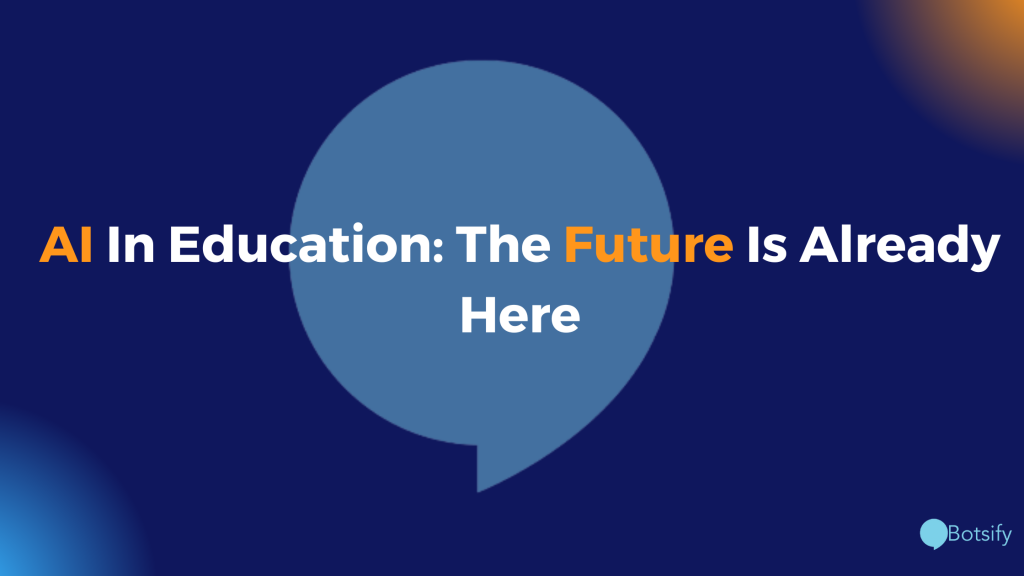Although Artificial Intelligence (AI) may still sound like something from a sci-fi movie, it is here, and it is taking over the classroom. Machines already perform a variety of tasks helping teachers and students. These are digital assistants like Alexa and Siri, chatbots, robots-advisors, and smart recommendations.
The market size of AI in the education sector is growing every year. According to the AI Index, startups in this area received significant funding in 2020, $40 billion. The industry is also expected to grow by 40 percent by 2027.
What is so revolutionary about AI in education? Let’s take a closer look at the way it supports students and teachers.
How AI Is Used in Education: Examples
AI in education processes data to identify patterns and mimic human perception and behavior. It serves to monitor and assess student performance and predict their learning outcomes. A huge advantage of this technology is its ability to learn in the process and become more effective with every new application. Here are a few examples of how AI improves learning today:
- Spelling and Grammar Check. Thanks to a natural language processing feature, AI can even be used to improve, assess, and give feedback on written assignments. It corrects spelling, punctuation, and grammar. By using a grammar checker, people can more accurately find and resolve such errors and avoid human mistakes. Besides, modern AI-based checkers also allow polishing clarity and delivery.
However, when it comes to more complex tasks like essay writing, it’s always better to get real human support. When you ask a writer to do my essay for me, you enjoy a personalized, creative approach to your specific instructions. Digital tools come in handy, but human-centric guidance remains the core of education.
- Chatbots provide a two-way communication channel to help students with some common issues and questions. They are available 24/7, so learners don’t have to wait to get their concerns addressed.
- Personalized recommendations. Modern learning management systems leverage AI to provide students with personalized recommendations, just like Netflix. AI analyzes their activity to offer them educational content based on their needs and interests. For example, a student who is struggling with a certain topic gets some extra resources and an individual learning program to follow after assessment.
- Tutoring systems. With AI-empowered tutoring systems, teachers enter problems and solutions. This enables the computer to apply the learned patterns in similar contexts, helping students master tasks like math problems. While AI provides substantial support, sometimes students need more personalized help to fully grasp challenging concepts. For those looking for additional support, finding math tutors in Miami can provide personalized assistance and help reinforce the concepts learned through AI-based systems. Various skills teachers can educate students on different in-demand subjects, such as programming, digital marketing, copywriting, or UI/UX design
- Interactive learning games. Educational software leverages the power of AI to teach various subjects, including modern storytelling tools for teachers that make lessons more interactive. Such smart study games provide content tailored to a student’s needs and interests, schedule review sessions based on their progress, and offer personalized testing and feedback. These features make learning more effective and less time-consuming.
How AI Empowers Students and Teachers
With AI solutions, the education sector acquires a new framework. It builds a learning environment around the principles of personalization, adaptability, and efficiency. Here are the key benefits of AI:
- Comfortable and safe learning environment. Sometimes students are afraid of making mistakes when practicing in front of their teachers and classmates. Yet, when an AI bot becomes their study assistant, it creates a safe space for learning and exploration without the fear of failure.
- Real-time grading and feedback. AI solutions are becoming irreplaceable teacher assistants as they can grade assignments. First of all, it saves teachers a lot of time that they can now use more creatively instead of monotonously grading dozens of tests every day. Second, it gives students immediate feedback, which boosts self-reflection and helps during formative assessment. This enables learners to correct their mistakes immediately and reach better learning outcomes.
- Inclusive learning. AI makes education more accessible and inclusive. For example, people with hearing impairment can get subtitles automatically generated by AI. This helps them understand what their teacher or peers are saying in real-time. Language learners get translation help, which makes it easier for them to complete classroom assignments.
- Support of online learning. Since the outbreak of the global pandemic, the need to support student learning remotely became even more urgent. AI solutions provide the much-needed support when a teacher is not around.
- Timely interventions. As AI-empowered systems are continuously tracking students’ performance, it becomes easier for a teacher to monitor the progress of each individual learner. Thus, they can intervene whenever a student experiences difficulties or needs some extra resources.
- Task automation. Task automation is a huge benefit for educators. With AI, they don’t have to worry about administrative tasks like checking attendance, scheduling, or managing classroom materials. This saves them hours and hours every week to focus on the actual teaching.
- Personalization. To function, AI analyzes large datasets on student performance. This makes learning adaptive to the needs of each individual. Their interests, strong and weak points, and preferences are taken into account when offering them content recommendations or personalized learning paths.
Final Thoughts
AI has become a powerful growth driver for the education sector. Its focus on data and optimization makes learning fast and efficient. AI tools deliver academic support, automate tasks, and provide feedback and recommendations based on student performance. They have the potential to transform education and fix some of its biggest challenges.

